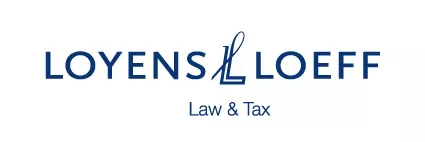- with readers working within the Utilities industries
- within Antitrust/Competition Law, Food, Drugs, Healthcare, Life Sciences and Wealth Management topic(s)
The ELTIF is an EEA-wide fund label designed to attract capital from EU HNWIs. In Luxembourg, structuring an ELTIF involves combining three key layers:
- the ELTIF label (to access EU HNWI capital);
- a suitable legal form (e.g. the public limited liability company (SA) or the partnership limited by shares (SCA)); and
- a Luxembourg private fund regime (e.g. the Reserved Alternative Investment Fund (RAIF) or Part 2 Undertakings for Collective Investment (Part 2 UCI)) to achieve tax neutrality.
In the EU, private funds are referred to as alternative investment funds (AIFs). To be eligible for the ELTIF label, an EU AIF must be managed by an EU alternative investment fund manager (EU AIFM). The EU AIFM can be a third-party manager, or an in-house EU AIFM controlled by the US manager of private funds (USFM).
While Luxembourg special limited partnerships (SCSps) remain the preferred legal form for AIFs marketing to professional investors, they are generally not well-suited for targeting HNWI. For this investor segment, the SA and the SCA are topping the list, with the latter offering traditional GP/LP-style governance.
An ELTIF established as a Luxembourg SA or SCA is fully subject to income tax in Luxembourg if not paired with a private fund regime, making it commercially unviable. However, when the ELTIF label is combined with a Luxembourg private fund regime, the structure becomes tax neutral. The most commonly used regimes for ELTIFs targeting HNWIs are the RAIF and the Part 2 UCI.
The RAIF and Part 2 UCI are the default fund regimes to be paired with the ELTIF label. The RAIF is not subject to regulatory approval and supervision in Luxembourg, while the Part 2 UCI offers a fully regulated option. Notably, for a Part 2 UCI seeking ELTIF status, the approval processes for the fund and ELTIF label can run in parallel, streamlining time-to-market.
The main driver for combining the ELTIF label with the Part 2 UCI or RAIF is, not tax, but market access. Unlike the RAIF, Part 2 UCIs enable the onboarding of capital from HNWIs in non-EU jurisdictions. Both regimes allow the launch of compartments, meaning sub-funds within one legal entity. Each sub-fund may pursue distinct strategies and target different investor profiles. The ELTIF label can be applied on a per sub-fund basis, offering structuring flexibility.
USFMs typically view the Part 2 UCI as the starting point for their non-U.S. retailization strategies. The ELTIF label is added when broader EU HNWI access is desired. However, because the ELTIF framework limits eligible investments, not all USFMs choose to combine it with their Part 2 UCI. Ultimately, managers must balance the benefit of expanded access to EU HNWI against the potential loss of investment flexibility that comes with the ELTIF label.
The content of this article is intended to provide a general guide to the subject matter. Specialist advice should be sought about your specific circumstances.




